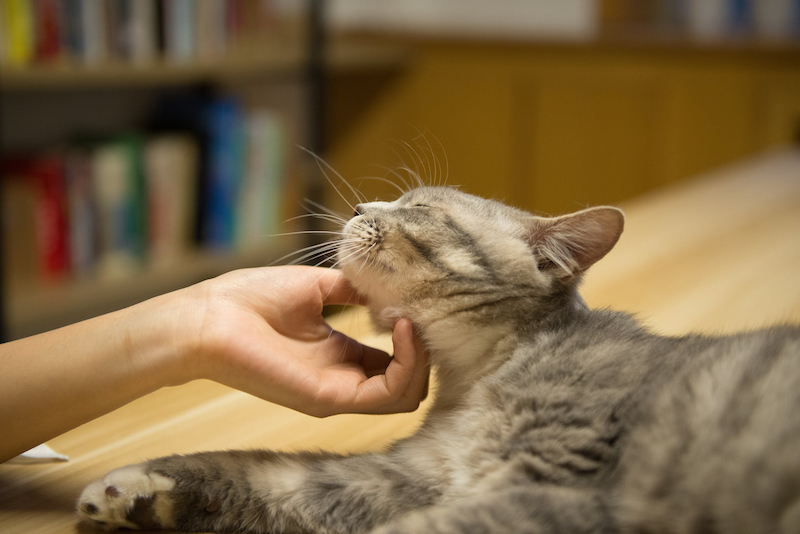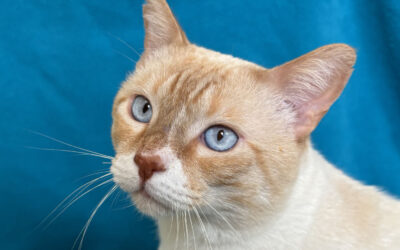
Raw Food Recommendations
Please read all cat food ingredients carefully to make the best decision for your own circumstances.
Raw food must be extremely fresh and the freshest raw food will usually be food you make yourself. However, it can be tricky to make sure your cat’s food has all the important vitamins and minerals, along with proper protein and fat.
One of the best sources for information on how to feed a whole, raw diet is Dr. Jean Hofve’s e-book, What Cats Should Eat: how to keep your cat healthy with good food. It has great background information on ingredients and how to read labels, compares types of food and finishes with approved foods and recipes for making your own.
Another good source is a book written by veterinarian Dr. Karen Becker, Dr. Becker’s Real Food for Healthy Dogs & Cats. It’s an updated version of the classic books written by Dr. Pitcairn in the last couple of decades. She has a very comprehensive supplement section to make sure your cat’s diet is balanced.
The book is very dog-centric, however, and assumes that what is good for dogs is also good for cats. You may want to lower the vegetable proportions of the recipes or eliminate them entirely.
Another veterinarian source is the website of Dr. Lisa Pierson. This is a very comprehensive site that addresses the most common questions and issues regarding raw feeding.
Many commercial raw foods are a cornucopia of feline-inappropriate ingredients. As an example, one brand has apples, carrots, squash, clay, broccoli, lettuce, spinach, etc, etc, ending with cloves! Few of these are researched and none are proven to be species-appropriate.
How to feed frozen raw food
Cats do not digest cold food well. All food should be offered at room temperature if possible.
Make sure any frozen raw food is thawed out completely. It’s best to use small portions and rotate through them every other day or so to keep the food fresh.
An easy way to make sure your raw food is room temperature is to fill a ceramic plate with water and microwave it for 30-60 seconds. Pour off the water (or retain some to add moisture to the food, always a good additive) and spread the raw food on the warm plate. The food will warm slightly without getting cooked, preserving nutrients and texture, and being more digestible than cold food is.
This company offers antibiotic-free meat and organs, along with trace minerals and vitamins plus fish oil in their blend.
ADVANTAGES: Options include chicken, turkey and lamb. They even have a prescription version for cats with kidney disease. Our experience is that the formulas are fresh and palatable. They are shipped well-packed in dry ice.
DISADVANTAGES: This can be more expensive at first, until you find the exact amount of food your cat needs. The food must be fed on schedule and cannot be left out for grazing. Some cats can be difficult to transition to raw food, especially if they are “kibble addicts” which can happen because of the enhancers (usually dried blood) which are sprayed on kibble. As with any raw meat, including your own if you’re a meat eater, it must be handled carefully.
Also, they are a subscription based company, depending on auto-ship for their orders. As any cat guardian knows, expecting a cat to eat the exact same thing from day to day, let alone month to month, is not always possible. The only way to bypass the annoying questionnaire to order directly is to call them at 877-738-6325.
Humanely raised, USDA inspected ingredients. Offers plain meat for sensitive cats.
ADVANTAGES: Options include chicken, turkey, beef, duck & rabbit, with sometimes emu/venison. Our experience is that the formulas are fresh and palatable. We’ve had some issues with FedEx shipping but the company will replace thawed items.
DISADVANTAGES: Same raw feeding issues as Darwin’s, above.
They also offer subscriptions online but they aren’t mandatory. Free shipping over $250.
Stella & Chewy’s Freeze-dried Raw Food
US made & “responsibly-sourced proteins [that] consist of 98% meat, organs and bones.”
ADVANTAGES: Options include limited-ingredient chicken, beef, turkey, rabbit, pork plus salmon-cod, salmon-chicken, duck-turkey-goose combos. The rabbit can be especially good for cats with allergies to conventional food. The food keeps for a long time and is easily rehydrated in any size portion at any point. DO NOT feed without adding water.
DISADVANTAGES: Can be pricey and the formulas include probiotics, which a healthy cat may not need.
Please see the articles below for more background information:
What should I feed my cat?
Ingredients: what to feed and what to avoid




